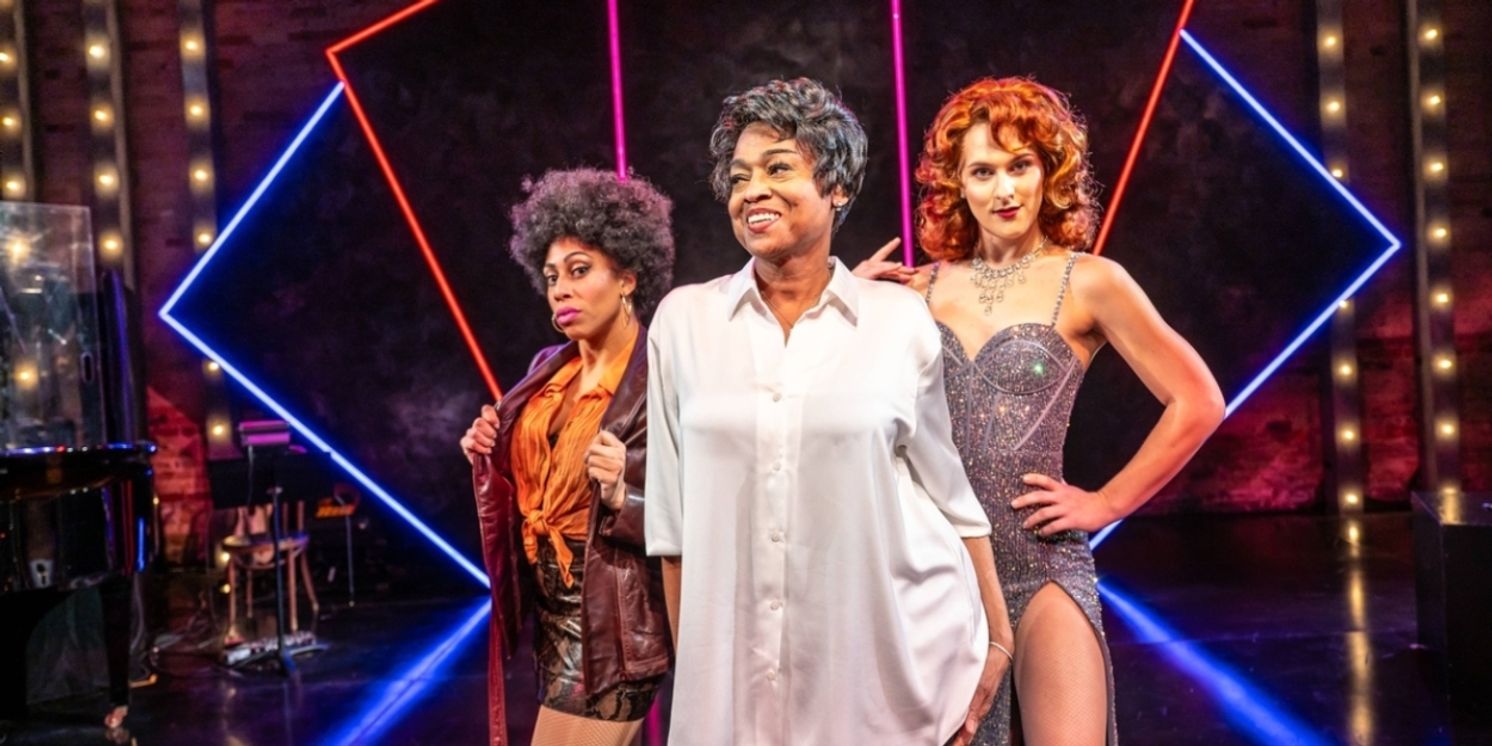Review: THE GUIDE TO BEING FABULOUS at Soulpepper
Sandra Caldwell's autobiography is a fabulous guide to self-acceptance

Sandra Caldwell is, indeed, fabulous.
The classy triple threat brings her autobiographical show, THE GUIDE TO BEING FABULOUS, to Soulpepper’s “Her Words” festival. It’s the third version of her attempt at an autobiography, with a crucial difference. The original versions, before Caldwell came out, left out a vital part of her identity: the stunning and talented Caldwell is a trans woman.
In Soulpepper’s production, expertly directed by Weyni Mengesha, Caldwell describes the roots of her journey, which began in the city but soon diverted to somewhere more rural. At thirteen, she quickly became disenchanted with the farm her mother had moved her family to in order to ensure their safety. Tiring of early mornings and agrarian life, she set out to explore Washington D.C.’s Dupont Circle district in all its mid-60s glory and danger, with members of its plethora of prostitutes and drag queens providing a safe haven for lost youth. They also gave Caldwell a start to her career, which took her from a local burlesque club and an encounter with one of David Bowie’s muses to the Moulin Rouge and numerous stage and screen roles.
Caldwell is an efficient and entertaining storyteller. She mostly avoids tales about her years of greater success to focus on her origin story, its culmination not being how many gigs she could book, but her ability to finally live her truth as an out trans woman after getting the lead role of Mama Darleena, a black trans woman, in Philip Dawkins’ play Charm. The structure of the story gives it a solid, impactful emotional resonance, and not just for Caldwell, who, sniffling during one particularly heartfelt scene, declares wearily, “I have to do this every night!”
It's also a smart choice that the 71-year-old Caldwell sticks to telling the story from the voice of her current self, tinged with nostalgia and hindsight. This viewpoint feels mature and honest, more fulfilling than an attempt to slip in and out of character at various different ages, allowing her to comment on the choices she once made. To set the mood of the changing eras, she instead uses her two lovely and glamourous assistants (Tiffany Deriveau and Miss Niki Nikita), who embody people from her past in the moment she met them with verve and panache. They’re assisted by sharp period styling by Ming Wong, who may give you a case of closet envy with Deriveau’s Foxy Brown look, Nikita’s slinky gowns, and Caldwell’s chic blouse and black sparkling pants combo.
Caldwell’s early years hold many of the most compelling moments, focusing on the humanity of people who often don’t get a lot of credit for sharing what little they have, and who created a community for the lost and undesirable at society’s fringes. She fashions a memorable portrait of a streetwise, mother-hen prostitute (played by Deriveau) who may call Caldwell “young dumb motherfucker,” but looks out for her every step of the way. She also speaks to the formative aspect of the New York ballroom scene, making the most of the stage’s shining central runway as her backup dancers (and, during my performance, even an eager audience member) demonstrate how best to vogue and face.
That isn’t to say that Caldwell doesn’t still have moves of her own. Her ballroom category is “realness,” and she takes absolute control of the stage when she demonstrates it. Though the ballroom category of realness is about one’s ability to “pass” as a chosen gender or sexuality, Caldwell demonstrates another type of realness, showing her fiercest but most honest self when she talks about her run-ins with police and jail time served, betrayal from trusted friends and lovers, her brother’s final moments, and her eventual decision to reveal her trans identity to the world. She describes her identity as both asset and hindrance; it gives her uniqueness and strength, while also being a constant source of fear. She speaks frankly about how she was not only excluded from the mainstream, but also from parts of her own community during Stonewall-era LGBTQ+ activism. Caldwell’s story is the best sort of confessional: funny, but not detached; smart, but full of feeling; passionate, but well composed.
While the story is spellbinding, the connecting musical numbers by Caldwell and James Dower are less memorable. That’s not really a bad thing; entertaining but largely unobtrusive, they exist more as a fun, bubbly way to get from Point A to Point B while evoking the style of the era, serving as structural support.
The staging also adds to the show’s structure. Surrounding the runway, cabaret tables fill out the floor in front of the traditional rows of audience. Those sitting in the cabaret seating are really part of the show and its energy; they wave perfect “10” score signs, roar with approval at the dancing, and may even be asked to join in the action. Early on, as Caldwell details her history with the police, the domed lights on the tables flash like the lights of a police car. All of these touches are clever and charming, and I found myself wishing the show would go even further in its tendency to stretch design and action flourishes into the audience.
At the back of the stage, set designer Anahita Dehbonehie has arranged video screens in panels that look like a fan, which provide a running documentary, showing pictures of Caldwell’s youth and family, newspaper clippings, and even a jail cell.
There’s always something to look at in THE GUIDE TO BEING FABULOUS, but don’t let its flash, glamour, and sequins fool you. Just like the star at its centre, there’s an important, unique story underneath. Let her guide you.
Photo of Tiffany Deriveau, Sandra Caldwell, and Miss Niki Nikita by Dahlia Katz
Reader Reviews
Videos

